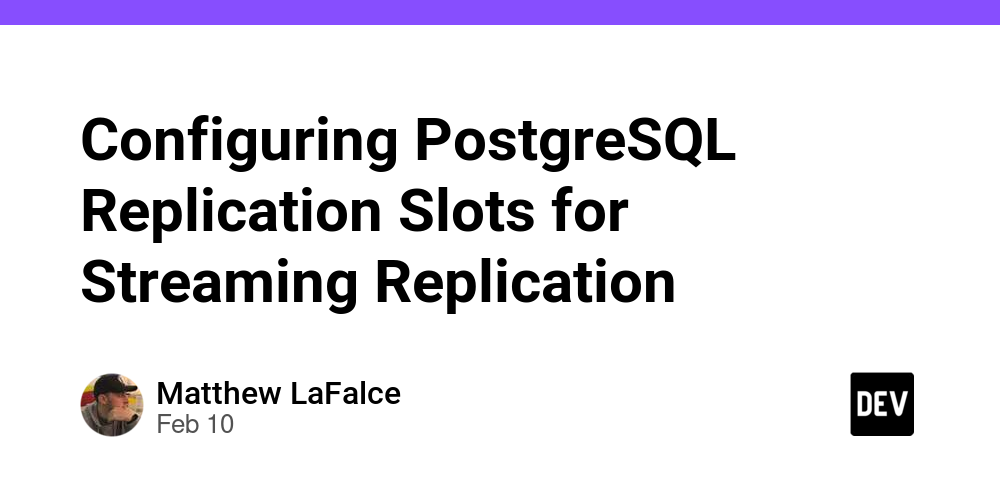Fair Source Software: Bridging Open Source and Proprietary Models
Abstract In today’s rapidly evolving software ecosystem, developers face the dual challenges of ensuring open collaboration and securing sustainable revenue. Fair Source Software emerges as a balanced licensing model, merging the core benefits of open-source with proprietary monetization strategies. This post examines the origins, key characteristics, practical applications, challenges, and future outlook of fair source licensing. By exploring related funding models, open-source dynamics, and real-world use cases, we gain insight into how fair source software can foster a more inclusive and financially viable innovation landscape. Introduction The world of software development continually evolves as new licensing models are introduced to meet the needs of both developers and users. Traditional open-source licenses offer transparency and collaboration, while proprietary licenses protect commercial interests. Fair source software has emerged as a hybrid model that promises the best of both worlds. In this post, we explore what fair source software is, why it matters, and how it is reshaping the software landscape. Fair source licensing has sparked discussions among developers, investors, and legal experts. By clearly delineating between non-commercial and commercial use, fair source software creates pathways for sustainable funding while retaining the spirit of openness. For more details on the base concept, check out the original article on Fair Source Software. Background and Context The Evolution of Software Licensing Historically, software was mainly distributed under proprietary licenses, offering companies complete control over modifications and distribution. However, with the rise of the internet and collaborative development platforms, the open-source movement gained momentum. Open source democratized software development, enabling developers worldwide to contribute and innovate collectively. Over time, developers recognized that while open-source software fosters collaboration, securing financial support for continuous development can prove challenging. This gap led to the development of alternative funding and licensing models, including crowdfunding, donation-based models, and the more recent fair source software. Defining Fair Source Software Fair source software is defined as a licensing model where the source code is open for inspection, modification, and non-commercial use while reserving the right to charge commercial entities for using the same software in profit-making activities. This approach maintains transparency and community collaboration yet ensures that creators receive compensation when their work drives commercial benefit. Ecosystem Context The fair source model is becoming particularly relevant in the age of distributed computing and blockchain technologies. Many organizations now seek to combine open collaboration with robust commercial incentives. Initiatives like GitHub Sponsors and platforms such as Open Source Initiative have accentuated the need for innovative licensing models that can sustain long-term projects financially. Core Concepts and Features Fair source software relies on several foundational principles. Its core concepts have evolved by borrowing elements from traditional open-source and proprietary licensing, along with innovative practices developed to address consumer and developer needs. Key Characteristics Source Availability: Like traditional open-source, fair source software provides the complete source code for transparency and community contributions. Users have access to modify and inspect the code, bolstering trust in the product. Dual Licensing Structure: The license distinguishes between free non-commercial use and paid commercial use. This duality protects developers financially while preserving community contributions. Clear Usage Guidelines: Fair source licenses include explicit terms that reduce ambiguities regarding rights and responsibilities. For instance, non-commercial use is generally free, whereas commercial use requires registering the usage and potentially paying a fee. Financial Sustainability: Developers can generate revenue to support continuous maintenance, security updates, and further innovation, addressing the common pain point of unsustainable open-source projects. Comparison Table: Open Source, Fair Source, and Proprietary Licenses Feature Open Source Software Fair Source Software Proprietary Software Source Accessibility Yes – Fully accessible and modifiable Yes – Accessible for non-commercial purposes No – Source code is normally closed Usage Rights Broad rights for modification and distribution Free for non-commercial; commercial usage restricted Limited and restricted licensing terms Monetization Indirect—donations, support services Direct—through commercial licensing fees Direct—sales, subscriptions, rec
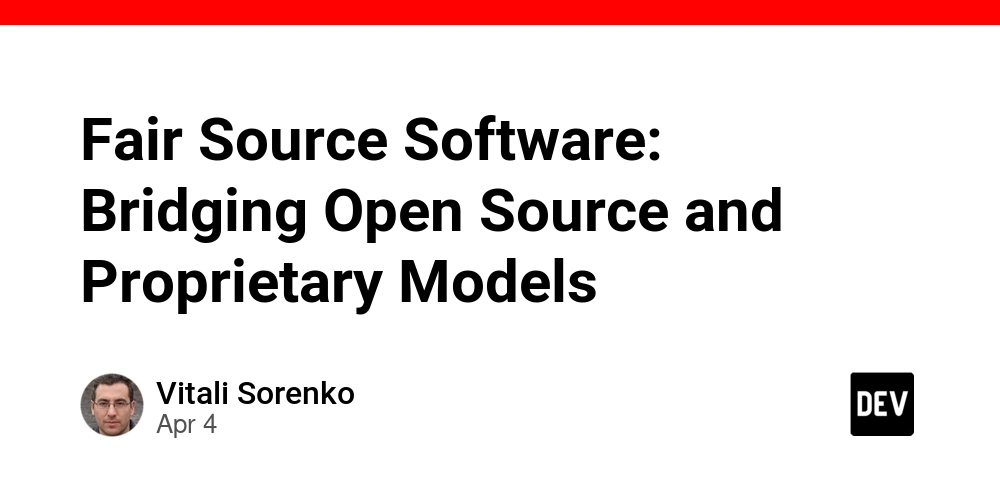
Abstract
In today’s rapidly evolving software ecosystem, developers face the dual challenges of ensuring open collaboration and securing sustainable revenue. Fair Source Software emerges as a balanced licensing model, merging the core benefits of open-source with proprietary monetization strategies. This post examines the origins, key characteristics, practical applications, challenges, and future outlook of fair source licensing. By exploring related funding models, open-source dynamics, and real-world use cases, we gain insight into how fair source software can foster a more inclusive and financially viable innovation landscape.
Introduction
The world of software development continually evolves as new licensing models are introduced to meet the needs of both developers and users. Traditional open-source licenses offer transparency and collaboration, while proprietary licenses protect commercial interests. Fair source software has emerged as a hybrid model that promises the best of both worlds. In this post, we explore what fair source software is, why it matters, and how it is reshaping the software landscape.
Fair source licensing has sparked discussions among developers, investors, and legal experts. By clearly delineating between non-commercial and commercial use, fair source software creates pathways for sustainable funding while retaining the spirit of openness. For more details on the base concept, check out the original article on Fair Source Software.
Background and Context
The Evolution of Software Licensing
Historically, software was mainly distributed under proprietary licenses, offering companies complete control over modifications and distribution. However, with the rise of the internet and collaborative development platforms, the open-source movement gained momentum. Open source democratized software development, enabling developers worldwide to contribute and innovate collectively.
Over time, developers recognized that while open-source software fosters collaboration, securing financial support for continuous development can prove challenging. This gap led to the development of alternative funding and licensing models, including crowdfunding, donation-based models, and the more recent fair source software.
Defining Fair Source Software
Fair source software is defined as a licensing model where the source code is open for inspection, modification, and non-commercial use while reserving the right to charge commercial entities for using the same software in profit-making activities. This approach maintains transparency and community collaboration yet ensures that creators receive compensation when their work drives commercial benefit.
Ecosystem Context
The fair source model is becoming particularly relevant in the age of distributed computing and blockchain technologies. Many organizations now seek to combine open collaboration with robust commercial incentives. Initiatives like GitHub Sponsors and platforms such as Open Source Initiative have accentuated the need for innovative licensing models that can sustain long-term projects financially.
Core Concepts and Features
Fair source software relies on several foundational principles. Its core concepts have evolved by borrowing elements from traditional open-source and proprietary licensing, along with innovative practices developed to address consumer and developer needs.
Key Characteristics
Source Availability:
Like traditional open-source, fair source software provides the complete source code for transparency and community contributions. Users have access to modify and inspect the code, bolstering trust in the product.Dual Licensing Structure:
The license distinguishes between free non-commercial use and paid commercial use. This duality protects developers financially while preserving community contributions.Clear Usage Guidelines:
Fair source licenses include explicit terms that reduce ambiguities regarding rights and responsibilities. For instance, non-commercial use is generally free, whereas commercial use requires registering the usage and potentially paying a fee.Financial Sustainability:
Developers can generate revenue to support continuous maintenance, security updates, and further innovation, addressing the common pain point of unsustainable open-source projects.
Comparison Table: Open Source, Fair Source, and Proprietary Licenses
| Feature | Open Source Software | Fair Source Software | Proprietary Software |
|---|---|---|---|
| Source Accessibility | Yes – Fully accessible and modifiable | Yes – Accessible for non-commercial purposes | No – Source code is normally closed |
| Usage Rights | Broad rights for modification and distribution | Free for non-commercial; commercial usage restricted | Limited and restricted licensing terms |
| Monetization | Indirect—donations, support services | Direct—through commercial licensing fees | Direct—sales, subscriptions, recurring fees |
| Community Collaboration | Highly encouraged through global contributions | Encouraged with clear boundaries and incentives | Generally limited by closed-source policies |
Additional Features Documented in the Ecosystem
Across the landscape, various projects have adopted fair source principles, creating hybrid models. For example, Redis Labs’ approach with the Redis Source Available License (RSAL) or MongoDB’s Server Side Public License (SSPL) illustrate efforts to strike a balance between openness and commercial viability.
Bullet List: Core Advantages of Fair Source Software
- Financial Viability: Ensures developers are compensated for commercial usage.
- Enhanced Transparency: Source code availability encourages auditing and community improvements.
- Legal Clarity: Explicit licensing terms reduce disputes surrounding usage rights.
- Inclusive Innovation: Enables both hobbyists and businesses to benefit from the software while preserving commercial incentives.
- Sustainability: Supports long-term project maintenance and development through revenue generation.
Applications and Use Cases
Fair source software is finding its niche in projects where community collaboration is vital, yet commercial exploitation is inevitable.
Example 1: Database Technologies
MongoDB’s shift from a pure open-source model to the implementation of the SSPL exemplifies fair source licensing. By requiring commercial users to share derivative source code or obtain a separate commercial license, MongoDB can secure revenue necessary for ongoing research and development.
Example 2: In-Memory Data Stores
Redis Labs offers Redis under its RSAL. This model allows free usage for personal projects while requiring commercial deployments to purchase licenses. This ensures the open contribution of improvements from the community, with businesses supporting the creators financially.
Example 3: Scalable Distributed Systems
Cockroach Labs leverages the Business Source License (BSL). CockroachDB provides a powerful distributed database accessible for testing and non-commercial development, while its commercial usage is subject to licensing fees. This ensures that business-critical applications contribute to the software’s future development.
Challenges and Limitations
Despite the potential benefits, fair source software faces several hurdles.
Perceived Commercial Restrictions
Some community members express concerns that imposing commercial restrictions may dampen the free spirit of traditional open-source software. While non-commercial users generally remain unaffected, businesses may be hesitant if the licensing fees or terms are not clearly defined.
Legal Complexity and Fragmentation
The dual nature of fair source licensing can create legal complexities. The need to navigate different licensing terms for commercial versus non-commercial use may lead to inconsistencies and fragmentation. Legal experts must work closely with developers to ensure that licensing terms are both enforceable and fair.
Community Division
Introducing revenue models into open-source projects might alienate some community members. This division between commercial-focused users and community contributors could potentially hinder collaborative efforts if not managed with sensitivity and clear communication.
Dependency on Commercial Adoption
The success of the fair source model is intimately tied to the willingness of commercial users to pay for licenses. If the market does not embrace this model, it could jeopardize the financial sustainability for developers relying on these revenues.
Future Outlook and Innovations
As technology evolves, so do licensing models. Fair source software is likely to continue influencing how software projects are funded and maintained.
Trends to Watch
Blockchain Integration:
With the advent of blockchain technologies, fair source licensing could be enforced through smart contracts. This innovation would enhance transparency and ensure immediate compensation for commercial users.Global Regulatory Alignment:
As governments update their regulations on intellectual property and digital commerce, fair source licenses may evolve to help software projects remain competitive internationally.Community Empowerment:
Platforms like FairSource.dev and initiatives such as GitHub Sponsors are growing increasingly important. They build financial models around community contributions, which can work synergistically with fair source licensing.Hybrid Funding Models:
The future may see more integration of fair source licensing with crowdfunding and decentralized finance models. A blend of these approaches could allow for more flexible funding and incentivization for developers.
Innovations in Licensing Enforcement
Technological advancements may automate licensing compliance. For instance, using machine-readable licenses embedded directly in the code repository could simplify how commercial usage is tracked and enforced. Legal tech companies are already exploring these avenues, potentially creating standardized licensing frameworks that can be easily adopted by open source projects.
Related Reading and Developer Insights
For a deeper dive into how innovative licensing models are transforming the software industry, consider exploring these resources:
- Navigating the Financial Sustainability of Open Source Projects
- Supporting the Backbone of Innovation – Financial Assistance for Open Source Developers
- Unveiling the Secrets of MPL 1.1 – A Deep Dive into Open Source Licensing
Additionally, view these authoritative sources for further details on licensing:
And explore further insights on innovative licensing models via these links:
- Arbitrum and Open Source License Compatibility
- Arbitrum and Community Governance
- Arbitrum and Compliance Solutions
- License Token Innovative Licensing for Open Source
- License Token Bridging the Gap in OSS Funding
Summary
Fair source software stands at the intersection of open collaboration and commercial sustainability. By allowing free non-commercial use while requiring commercial entities to pay for licenses, this model holds the promise of balancing community engagement with necessary revenue streams. The model has already been adopted by significant projects such as MongoDB, Redis Labs, and Cockroach Labs, demonstrating real-world viability.
Key benefits include:
- Financial Sustainability: Increases the likelihood of long-term project maintenance.
- Legal Clarity: Distinguishes clearly between different types of software use.
- Enhanced Collaboration: Retains community innovation by keeping source code open for non-commercial purposes.
However, fair source licensing is not without challenges, including legal complexity, potential community division, and dependence on commercial uptake. Innovations such as blockchain-based licensing enforcement and enhanced regulatory clarity may overcome these obstacles and drive further adoption.
Conclusion
The emergence of fair source software reflects the dynamic nature of the software industry. As developers seek ways to sustain innovation while maintaining the core values of open source, this hybrid licensing model provides a promising path forward. By balancing openness with financial incentives, fair source licensing not only supports developer livelihoods but also encourages a vibrant, collaborative ecosystem.
In summary, fair source software:
- Bridges the gap between open and proprietary models.
- Provides legal clarity and flexible usage rights.
- Encourages innovation by keeping community collaboration intact while ensuring commercial drivers contribute to the software’s evolution.
As industry trends lean towards decentralized funding and automated licensing compliance, fair source software is poised to play a pivotal role in shaping the future of digital innovation. Whether you are a developer, an investor, or a technology enthusiast, understanding the dynamics of fair source licensing can offer valuable insights into the sustainable funding of tomorrow’s software projects.
By embracing models that support both open collaboration and commercial viability, the technology ecosystem can unlock an era of balanced innovation and financial sustainability.
Happy coding and exploring new licensing paradigms!










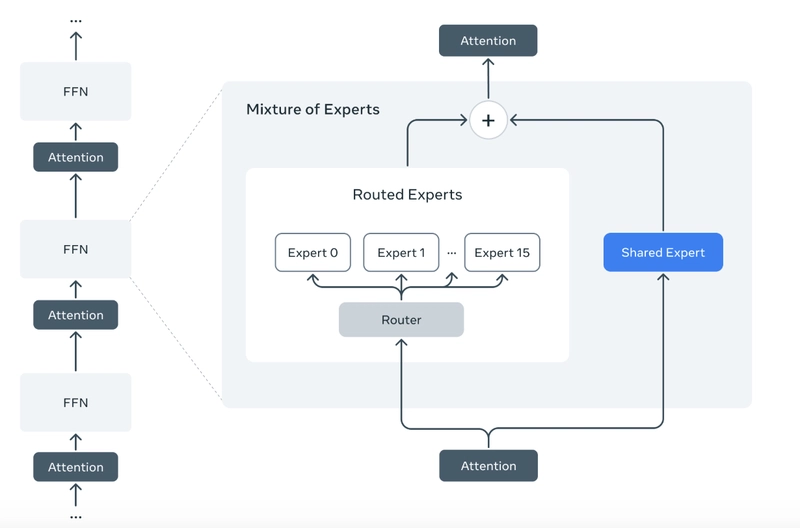
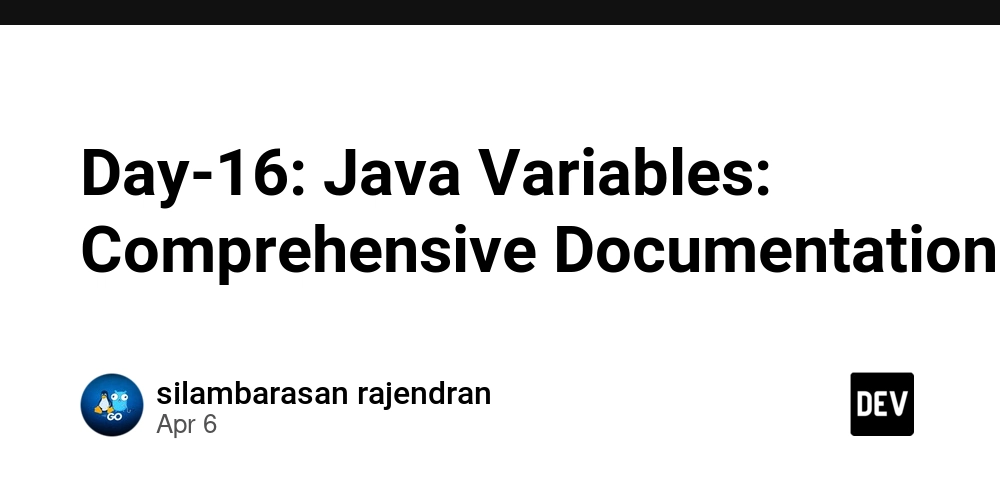

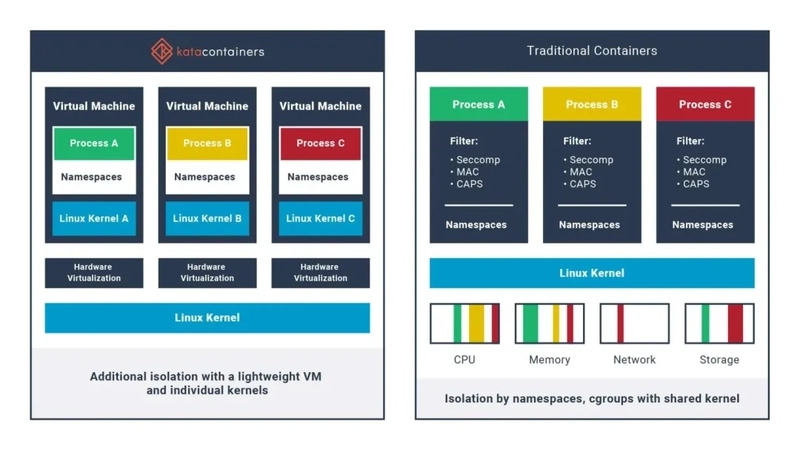




 (1).webp?#)



















































